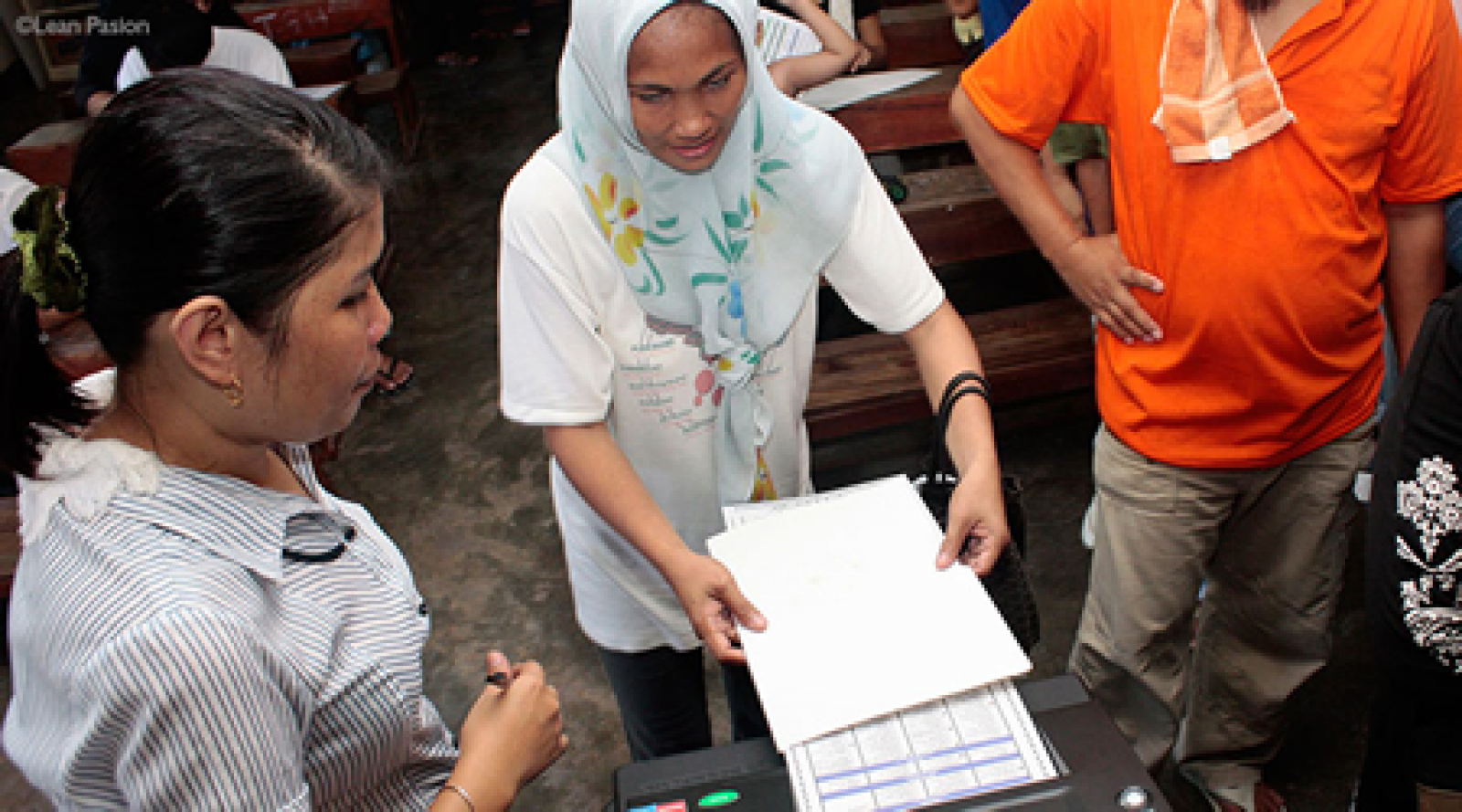
SHARE
ISSUES
As a growing number of countries are considering the use of electronic technologies in elections, NDI and the International Foundation for Electoral Systems (IFES) have produced a new guide laying out the opportunities, pitfalls and lessons learned presented by these new technologies.
Written for election officials, candidates, election observers, and democracy and governance specialists, the guide, Implementing and Overseeing Electronic Voting and Counting Technologies, builds on the organizations’ combined 55 years of experience promoting electoral integrity across the globe.
The handbook is the first to address the new technologies from the perspectives of all major electoral stakeholders. For electoral management bodies, the guide helps weigh the rationale, benefits and challenges of transitioning to e-voting or counting, and suggests how to use these technologies in an accountable, inclusive and transparent way. For candidates, political parties and election observers, the guide will help them understand and monitor these processes. And the guide will help international democracy and governance specialists design and carry out effective election programs in countries adopting or considering the use of electronic technologies.
NDI and IFES designed the guide for readers interested in a brief primer on e-voting and counting technologies, as well as for readers seeking a more in-depth, practical understanding. In the way of tools, it includes 19 “key consideration” checklists tailored for electoral management bodies, political parties and election monitors, among others. A list of additional resources is also provided.
The guide is organized into the following sections:
- Overview of e-voting and counting technologies used around the world, benefits and challenges, and key issues to be considered when introducing these technologies;
- Emerging electronic voting and counting standards;
- Making a decision on whether to use e-voting or counting;
- Building an e-voting or counting system;
- Implementing and monitoring the technology during an election;
- Internet voting considerations; and
- Concluding remarks.
The guide also incorporates 25 country examples from across Asia, Europe, Latin America and North America, including three in-depth case studies on:
- The Philippines, which highlights lessons learned from the country’s transition to nationwide e-counting for the 2010 general elections;
- Brazil, which explores how the country, despite its socioeconomic and geographic diversity and size, has conducted nationwide electronic voting using direct recording electronic (DRE) voting machines for more than a decade; and
- The Netherlands, which examines the reasons behind and lessons learned from the country’s full-scale reversal back to paper balloting and manual counting after conducting e-voting in various forms for nearly three decades.
This guide was made possible by the support of the United States Agency for International Development (USAID).
Explore the web-based, interactive version of the guide here, or download it here.
Related:
Published on December 17, 2013


